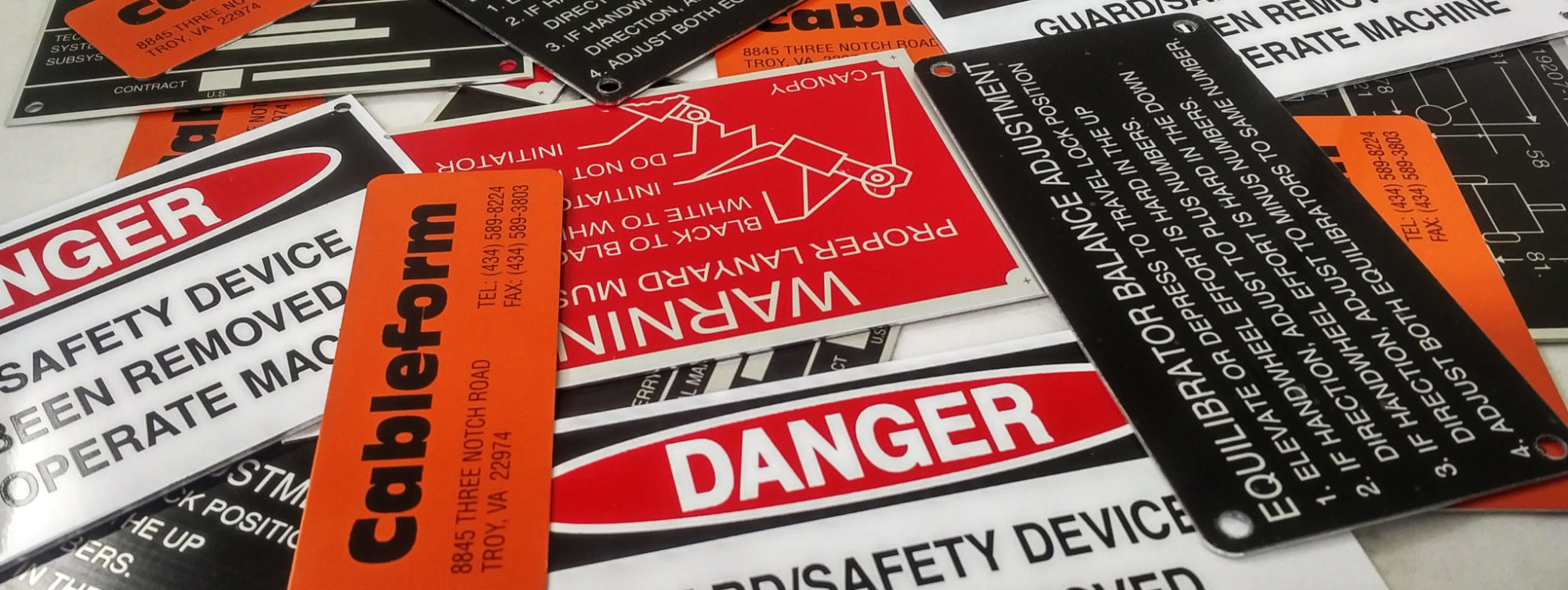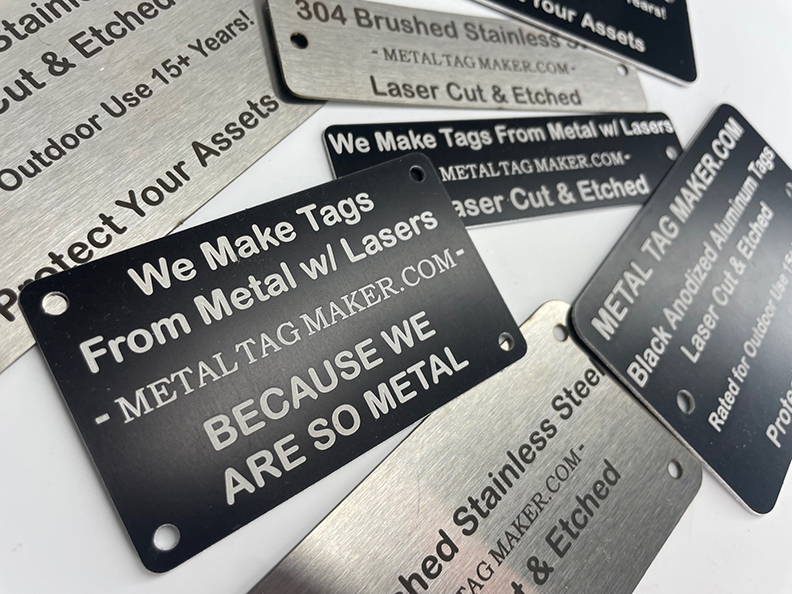Metal Tags
Metal tags, labels, plates, and identifying markers play a crucial role in various industries and applications, providing durable and reliable means of identification. These versatile tools are utilized for a myriad of purposes, ranging from equipment labeling in industrial settings to decorative applications in personalized items.
Only Thing Faster than our Lead Times – Are the Reorders!
One of the key considerations when choosing metal tags is the selection of the substrate, or the material on which the information is engraved or printed. Common substrates include stainless steel, aluminum, brass, and anodized aluminum. Each substrate comes with its unique set of characteristics, making it suitable for specific environments and applications.
Stainless steel is renowned for its exceptional corrosion resistance, making it an ideal choice for harsh industrial environments. Its durability ensures that the information on the tag remains legible for an extended period. Aluminum, on the other hand, is lightweight and cost-effective, making it a popular choice for applications where weight is a concern. Additionally, aluminum can be anodized, providing increased resistance to corrosion and wear.
Quick – Fast – Never in a Hurry!
Brass, with its timeless aesthetic appeal, is often chosen for decorative purposes. Its warm, golden hue adds a touch of elegance to engraved plaques, nameplates, and commemorative markers. The ability to polish brass also contributes to its enduring popularity in the creation of ornamental tags and labels.
“Since 1891 The House Of Good Impressions”
Anodized aluminum is a substrate that has undergone an electro-chemical process to enhance its corrosion resistance and durability. This process creates a protective oxide layer on the surface, making it suitable for outdoor applications and areas with high exposure to the elements. Anodized aluminum tags are commonly used in industries such as aerospace and marine, where resilience against environmental factors is paramount.
When it comes to durability, stainless steel stands out as one of the most robust choices. Its resistance to corrosion, extreme temperatures, and harsh chemicals make it suitable for demanding environments. Stainless steel tags are often used in the oil and gas industry, where exposure to corrosive substances is prevalent.
Enhance Safety, Boost Organization: Laser Engraved Precision on Every Plate
In contrast, aluminum may be more susceptible to wear and tear, but its lightweight nature makes it an excellent choice for applications where weight is a critical factor. Anodized aluminum strikes a balance by combining the lightweight properties of aluminum with enhanced durability, making it suitable for a wide range of applications.
Transforming Ideas into Laser-Engraved Legacies
In addition to functionality, metal tags and labels also serve as decorative elements in various settings. Brass, with its classic and timeless appearance, is often chosen for personalized items such as engraved plaques, nameplates, and awards. The ability to engrave intricate designs and detailed information adds to the aesthetic appeal of these decorative metal tags.
Crafting Brilliance, One Laser Beam at a Time!
The choice of metal tags, labels, plates, and identifying markers depends on the specific requirements of the application. The selection of the substrate, whether stainless steel, aluminum, brass, or anodized aluminum, plays such a crucial role in determining the durability and functionality of the metal tag. While stainless steel may excel in harsh industrial environments, aluminum and brass offer lightweight and decorative options, catering to a diverse range of needs across industries. The combination of functionality and aesthetics makes metal tags an indispensable tool in identification and personalization.
Let us Help with Your next Project!
CONTACT US NOW!
Call us and reach a LIVE PERSON!
(800) 482 – 1553
Mon – Fri. 9AM – 5PM EST
We Engrave Anything!
Check out our Satellite Sites:
Laser.us
EngravedSwitchplatesNOW.com
LaserCuttingPros.net
MetalTagMaker.com
LaserEngravingPros.com





Comments are closed